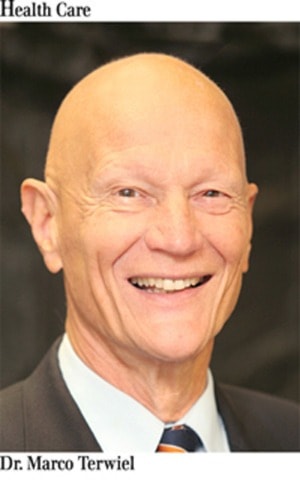Pig and turkey farmers experience regular boom and bust cycles of raising too many animals and getting low prices, or too few with high prices.
With all of our computer databanks, one would expect the marketing boards to do a better job balancing supply and demand.
But if the marketing boards of pigs and turkeys would compare themselves with the human resource management of health care personnel by government and universities, then they would still be the stars of the show.
We can forgive Justice Emmett Hall’s recommendation in his 1964 Medicare report to greatly expand the enrollment of future physicians to keep pace with his projected population explosion of baby boomers. Hall did not know that Dr. Gregory Pincus had been laboring away at the development of an oral contraceptive.
This was at the request of Margaret Sanger, the American woman who coined the term birth control and wanted the creation of an inexpensive effective “magic pill” for women to control the frequency and number of pregnancies.
The sexual revolution caused by this hormone tablet cut the birthrate by some 20 per cent, and Hall was way off in his predictions for population growth.
But, in the meantime, the medical schools kept on grinding out the many doctors meant to deal with a population growth that did not materialize.
By 1980, the governments were facing a glut of physicians. Here in B.C., the government imposed a restriction on the numbers of new doctors who could open a practice in ‘over-doctored’ areas, such as the Lower Mainland and Victoria.
It was paradise for both doctors and patients alike. No waiting for appointments, no long wait lists for surgeries, plenty of work for all health care personnel, since the service was free for the patients.
When anything is ‘free,’ it does something to the mentality of the consumer and the availability of no-cost health care is no exception. As a result, the cost of health care increased steeply and all the provincial and territorial health ministries got together and miraculously agreed to commission two UBC health economists, Barer and Stoddard, to produce a comprehensive review of issues and policy options for an adequate supply of medical services for Canadians at an affordable cost.
By 1991, they had produced a 355 page report with 53 recommendations for an integrated health care system. They cautioned the various governments to abstain from “cherry picking” among the recommendations, because that could easily do more harm than good. Politicians being politicians, ignored this advice and just picked the one recommendation that promised to save the most money. Admissions to medical school were cut by some 10 per cent (310 seats nationwide) in the hope to reduce health-care costs.
Our political masters are conditioned to do mainly short-term thinking and they ignored any of the questions of the medical establishment what the long-term consequences of this rather drastic cut in the supply of new physicians would be. The idea that convinced them to go ahead with preventing many hundreds of qualified Canadian students to enter the medical schools was that every physician costs the system more than just his or her professional income. Doctors order tests and other investigations, admit patients to hospitals and perform expensive surgeries, prescribe costly medications, create much work for allied health professionals – such as physiotherapists, dietitians, laboratory and imaging technicians – all adding to the health care bill.
The simple-minded bureaucrats and their political bosses thought that if you have fewer doctors, the whole system would be a lot less expensive. They never considered that all the people who work in the health care system do this because there are millions of Canadians who fall ill, get into accidents, suffer heart attacks or strokes, develop arthritis, diabetes, high blood pressure and a host of other ailments that do not go away by themselves.
Just because there may be fewer doctors, people do not postpone accidentally breaking their hips or putting off getting a heart attack.
Despite of the temporary cuts, it was a surprise to find that the number of doctors per 10,000 population remained about the same. Some of that is due to the fact we imported more MDs from other countries.
Yet people started to have trouble finding a family doctor and the waits for specialist appointments and surgeries grew longer.
There are several reasons for this. One is the feminization of health care. The majority of new MDs are female generally they take more time off and work fewer hours, especially when still young and have chosen to raise children.
Another reason is that younger male doctors also do not wish to work the ridiculously long hours their older counterparts used to put in.
Furthermore, the health care technology has exploded and many new and fabulous services are now available.
All these require highly trained physicians. It is not unusual to need a team of close to 20 people to do a heart transplant.
Because the politicians felt the heat of the perceived shortage, they expanded medical school enrolment from 1,577 to 2,506 per year around the year 2000. Now we are starting to see the beginnings of a glut again in certain specialties and in the next few years that surplus will change a lot of things for doctors and patients alike.
I wonder why is it so difficult in this day and age of computers and data processing for those responsible to manage the health care system to get their act together and figure out how many of what specialty we need and when and where they are needed?
Are we really no better managing looking after patients as we are raising the right number of pigs and turkeys?
Dr. Marco Terwiel is a retired family physician who lives in Maple Ridge.
